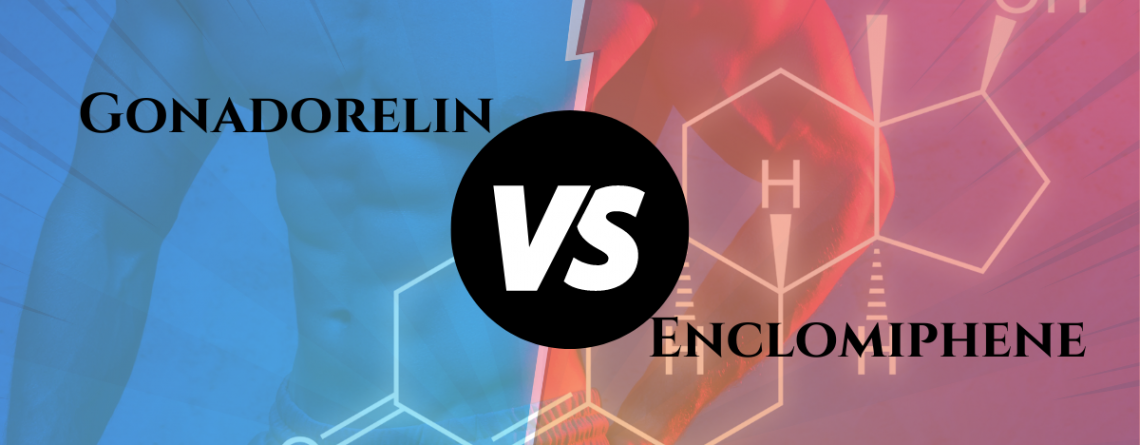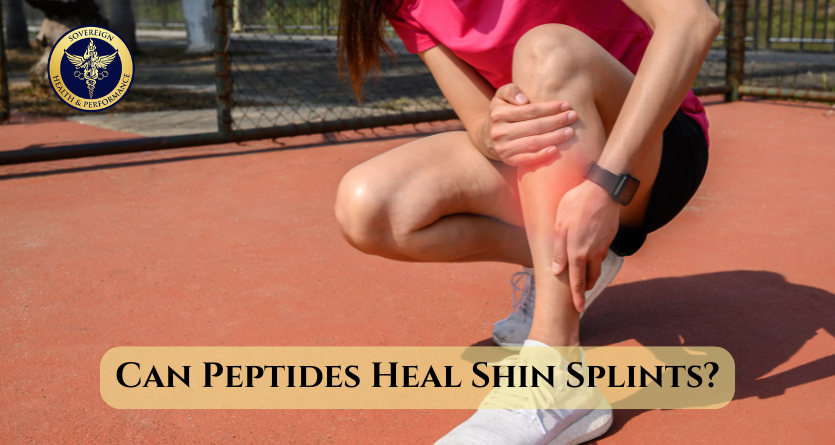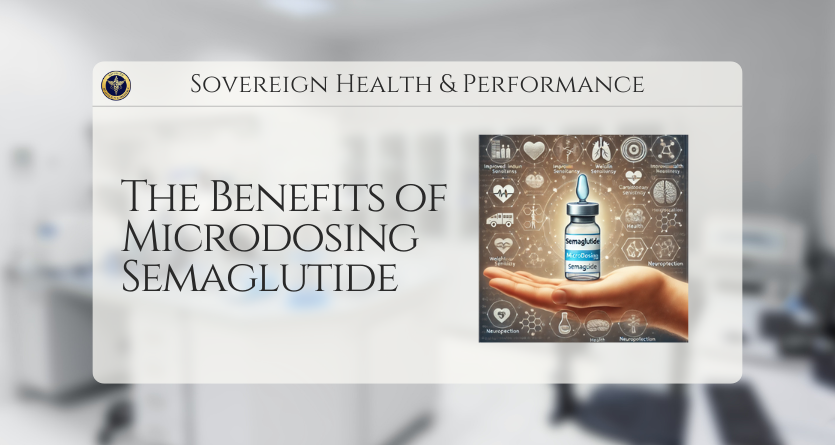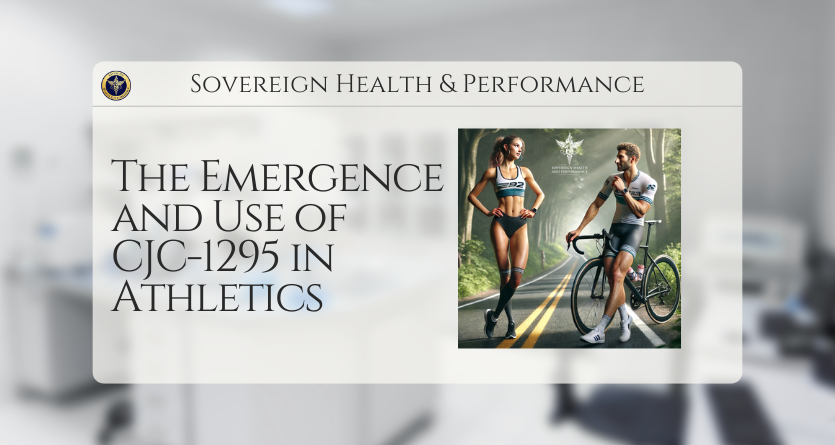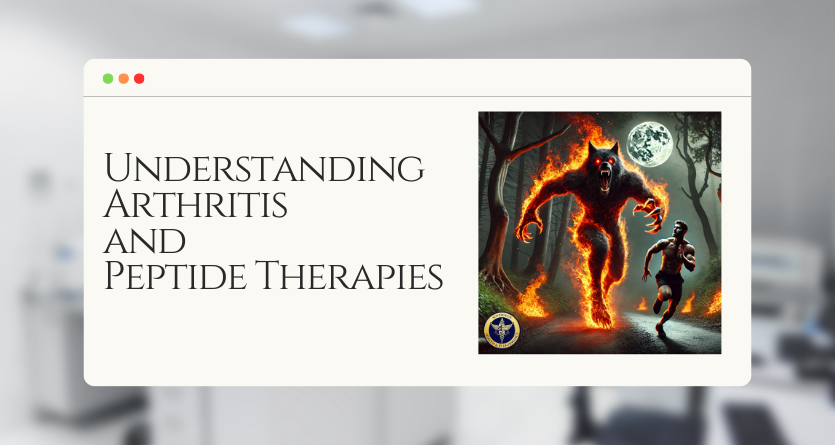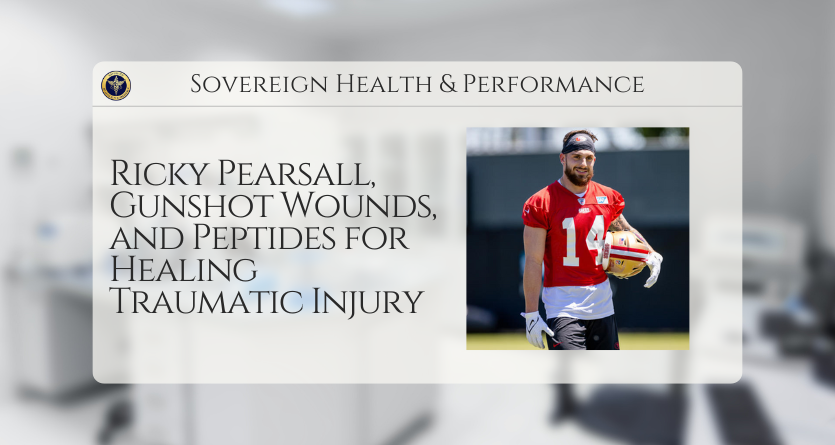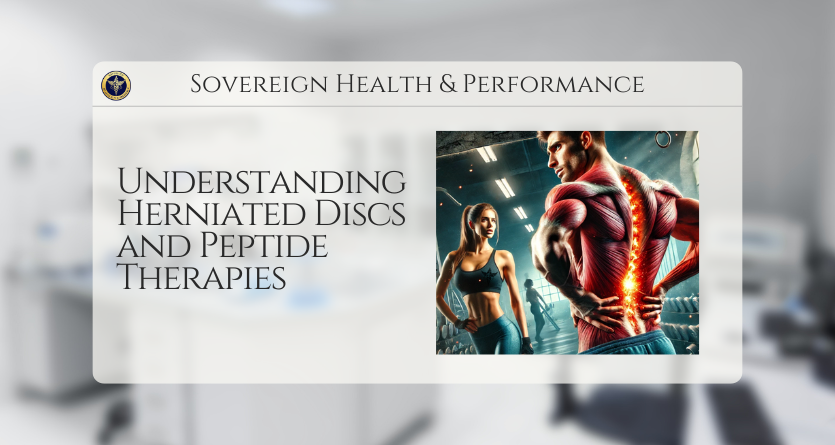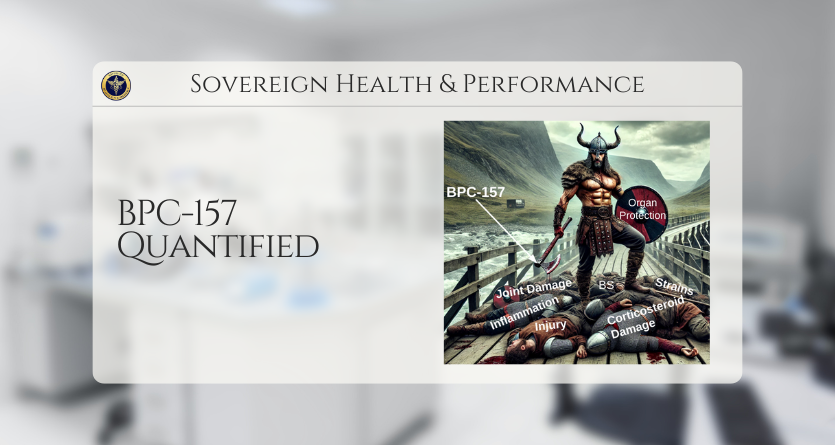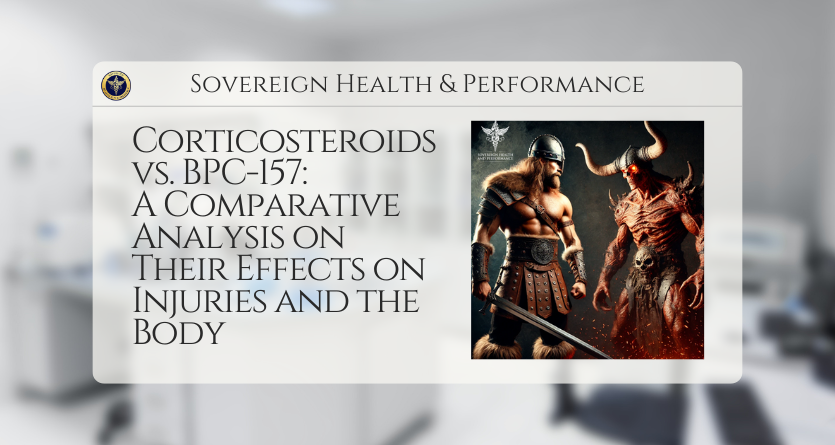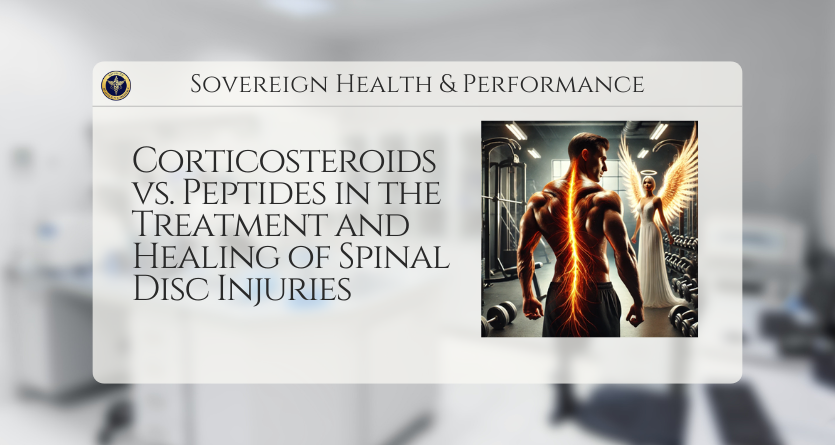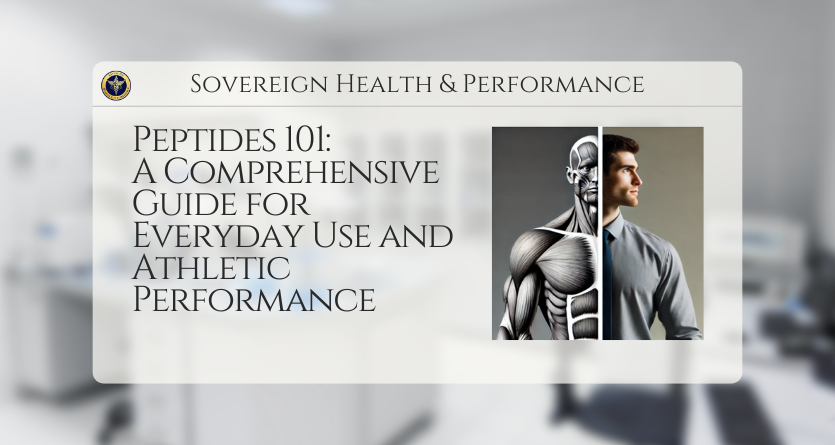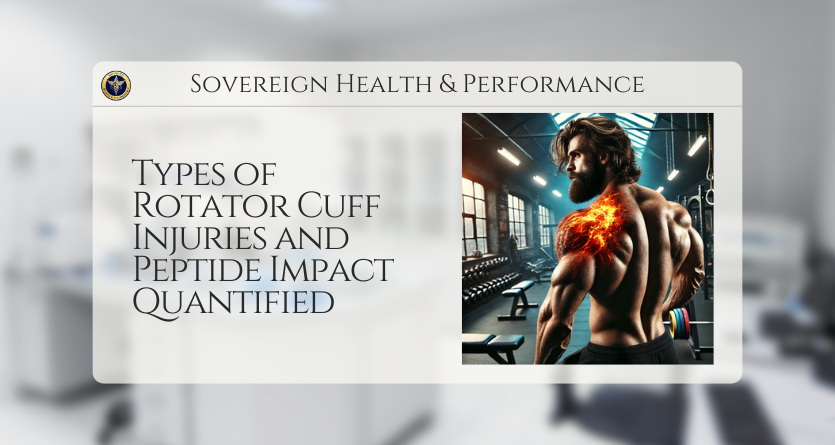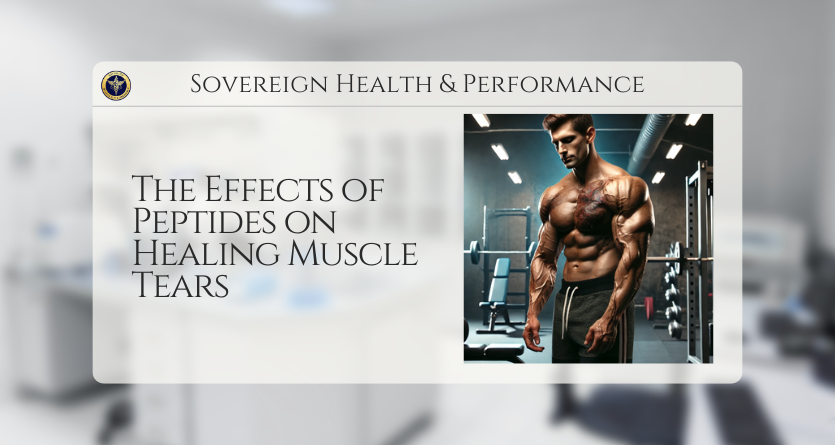09Feb
09Feb
Can Peptides Help Heal Shin Splints (Medial Tibial Stress Syndrome) More Quickly?
Can Peptides Help Heal Shin Splints (Medial Tibial Stress Syndrome) More Quickly? Table of ContentsCan Peptides Help Heal Shin Splints (Medial Tibial Stress Syndrome) More Quickly?First off, what are the symptoms of Shin Splits, AKA Medial Tibial Stress Syndrome?What is actually going on...
09Feb
Understanding Golfer’s Elbow and How Peptides Can Help
Understanding Golfer's Elbow and How Peptides Can Help What is Golfer's Elbow? Golfer's elbow, medically known as medial epicondylitis, is a condition characterized by pain and inflammation on the inner side of the elbow. It is caused by damage to the tendons that control wrist and finger...
09Feb
The Benefits of Microdosing Semaglutide
The Benefits of Microdosing Semaglutide Introduction Semaglutide, a glucagon-like peptide-1 (GLP-1) receptor agonist, is widely recognized for its efficacy in managing type 2 diabetes and obesity. Traditionally administered in higher doses to achieve significant clinical effects, semaglutide is now being explored in lower, "microdosed" amounts for a...
09Feb
The Emergence and Use of CJC-1295 in Athletics
The Emergence and Use of CJC-1295 in Athletics Table of ContentsIntroduction: The Rise of CJC-1295 in the Athletic SceneThe Underground Adoption of CJC-1295Specific Cases and the Ban of CJC-1295Mechanisms of Action: How Athletes Used CJC-1295Pharmacokinetics: Half-Life, Testing, and ClearanceCJC-1295 Beyond...
09Feb
Performance Spotlight: MOTS-c in Athletics: Performance, Recovery, and Injury Prevention
Performance Spotlight: MOTS-c in Athletics: Performance, Recovery, and Injury Prevention Introduction: The Emergence of MOTS-c in Athletics MOTS-c, a mitochondrial-derived peptide, began garnering attention in the underground athletic scene shortly after its discovery in 2015 by Dr. Pinchas Cohen and his team at the University of Southern...
09Feb
Understanding Arthritis and Peptide Therapies
Understanding Arthritis and Peptide Therapies Executive Summary: Understanding Arthritis and Peptide Therapies Arthritis is a debilitating condition affecting millions globally, characterized by joint inflammation, pain, and stiffness. It poses a significant risk to athletes, whose rigorous physical activity increases the likelihood of osteoarthritis due to the wear...
09Feb
Ricky Pearsall, Gunshot Wounds, and Peptides for Healing Traumatic Injury: The Power of BPC-157, Thymosin Beta-4, GH Boosters, GHK-Cu, and MOTS-c
Ricky Pearsall, Gunshot Wounds, and Peptides for Healing Traumatic Injury: The Power of BPC-157, Thymosin Beta-4, GH Boosters, GHK-Cu, and MOTS-c Introduction to Peptides for Healing Traumatic Injury Peptides are short chains of amino acids that act as signaling molecules within the body, influencing many biological processes,...
09Feb
Synergistic Healing: The Power of BPC-157 and TB-4 for War Fighters, Athletes, and Everyone in Between
Synergistic Healing: The Power of BPC-157 and TB-4 for War Fighters, Athletes, and Everyone in Between In the realm of injury recovery, particularly for War Fighters and athletes, the use of peptides like BPC-157 and Thymosin Beta-4 (TB-4) has become increasingly prominent due to their remarkable...
09Feb
Understanding Herniated Discs and Peptide Therapies
Understanding Herniated Discs and Peptide Therapies Executive Summary Herniated discs, commonly referred to as slipped or ruptured discs, occur when the soft, gel-like center of a spinal disc pushes through a tear in the outer ring, often compressing nearby nerves. This leads to symptoms such as pain,...
09Feb
BPC-157 Quantified
BPC-157 Quantified BPC-157, a synthetic peptide derived from a protein in the stomach, has been studied extensively for its potential benefits in promoting healing and recovery, particularly in wound healing, tissue repair, and inflammation reduction. While most research has been conducted in animal models, several studies...
09Feb
Corticosteroids vs. BPC-157: A Comparative Analysis on Their Effects on Injuries and the Body
Corticosteroids vs. BPC-157: A Comparative Analysis on Their Effects on Injuries and the Body When it comes to managing injuries, particularly those involving inflammation and tissue damage, two different classes of compounds have gained significant attention: corticosteroids and the peptide BPC-157. Corticosteroids have been a longstanding...
09Feb
Corticosteroids vs. Peptides in the Treatment and Healing of Spinal Disc Injuries: A Comparative Analysis with References.
Corticosteroids vs. Peptides in the Treatment and Healing of Spinal Disc Injuries: A Comparative Analysis with References. Abstract Spinal disc injuries, including herniated discs, are common sources of back pain and disability. Traditional treatments often involve corticosteroids to reduce inflammation and manage pain. However, emerging research suggests...
09Feb
The Superiority of Injectable Peptides Over Oral Formulations
The Superiority of Injectable Peptides Over Oral Formulations Peptides have gained significant attention in the field of medicine and sports performance for their ability to promote healing, enhance recovery, and improve various physiological functions. Among the various methods of administration, injectable peptides are often regarded as...
09Feb
Peptides 101: A Comprehensive Guide for Everyday Use and Athletic Performance
Peptides 101: A Comprehensive Guide for Everyday Use and Athletic Performance What Are Peptides? Peptides are short chains of amino acids, the building blocks of proteins, which play crucial roles in nearly all biological processes. Unlike larger proteins, peptides are small enough to interact more precisely with...
09Feb
Why is it that The Older You Get, The Slower You Heal; and What Can Be Done About It?
Why is it that The Older You Get, The Slower You Heal; and What Can Be Done About It? Executive Summary As individuals age, their ability to heal declines due to several biological factors, including reduced cellular regeneration, a weakened immune system, and diminished blood circulation. Understanding...
09Feb
Types of Tennis Elbow Injuries and Peptide Impact
Types of Tennis Elbow Injuries and Peptide Impact Tennis elbow, or lateral epicondylitis, is a condition caused by inflammation or degeneration of the tendons attached to the lateral epicondyle of the elbow. It results from repetitive strain or overuse, typically involving motions like gripping or lifting....
09Feb
Types of Rotator Cuff Injuries and Peptide Impact Quantified
Types of Rotator Cuff Injuries and Peptide Impact Quantified Executive Summary Rotator cuff injuries range from tendinitis and bursitis to tendon strains or tears, with each condition benefiting from peptide therapy for enhanced healing. BPC-157, Thymosin Beta-4 (TB-4), GHK-Cu, and Growth Hormone boosters (CJC-1295 and Ipamorelin) have...
09Feb
The Effects of Peptides on Healing Muscle Tears
The Effects of Peptides on Healing Muscle Tears Muscle tears, often resulting from acute injuries or overuse, are a common issue faced by athletes, fitness enthusiasts, and the aging population. The body's natural healing processes involve inflammation, tissue repair, and regeneration; however, these processes can be...
09Feb


